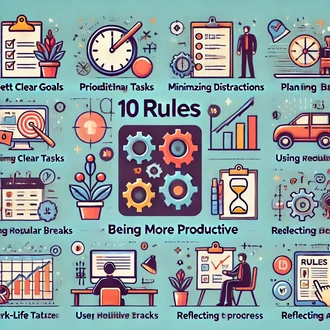Transcription Fallacy to man
In the workplace, productivity is essential for success and professional growth. However, there are obstacles that can negatively affect our ability to be productive and efficient at work. One of these obstacles is the male fallacy, an error in perception that is based on stereotypes and prejudices towards certain groups of people.
In this session, we will explore what the male fallacy is, how it can affect productivity at work, and how we can overcome it to improve our job performance.
What is the fallacy to man?
The fallacy to man, also known as the ad hominem fallacy, occurs when a person is attacked or criticized instead of their arguments or ideas. In the workplace, this can manifest as prejudice towards certain individuals because of their gender, race, religion, age, sexual orientation or any other personal characteristic. These biases can influence the way we interact and collaborate with our colleagues, which directly affects productivity and the work environment.
The fallacy to man can have a significant impact on work productivity. When we judge or treat someone unfairly due to bias or stereotypes, we create barriers in communication and collaboration.
This can lead to a toxic work environment, where people feel devalued and unable to fully contribute their skills and knowledge. In addition, this type of fallacy can lead to the exclusion of valuable talents and perspectives, resulting in missed opportunities for growth and improvement.
How to overcome it?
Identify and recognize bias:
- To overcome the fallacy to man, it is critical to identify and recognize our own biases and stereotypes. We all have unconscious biases that affect our perceptions and decisions, but it is important to be aware of them to prevent them from influencing our actions at work. Self-assessment and reflection are powerful tools for recognizing these biases and working to eliminate them.
- Promote diversity and inclusion: An effective way to overcome the male fallacy is to actively promote diversity and inclusion in the workplace. Fostering an environment where cultural, gender, age and background differences, among others, are valued and respected creates a space where each individual can feel safe and appreciated. This not only improves employee morale and well-being, but also stimulates creativity and innovation, which contributes to greater productivity and organizational success.
- Encourage open and respectful dialogue: Open and respectful dialogue is essential to overcoming the man-at-work fallacy. Encourage colleagues to express their ideas and opinions without fear of being judged for their personal characteristics. Active and empathetic listening will enable us to better understand others' perspectives and find more creative and effective solutions to work challenges.
- Emotional intelligence and interpersonal skills training: Emotional intelligence and interpersonal skills are critical to overcoming the fallacy to ma
man fallacy




